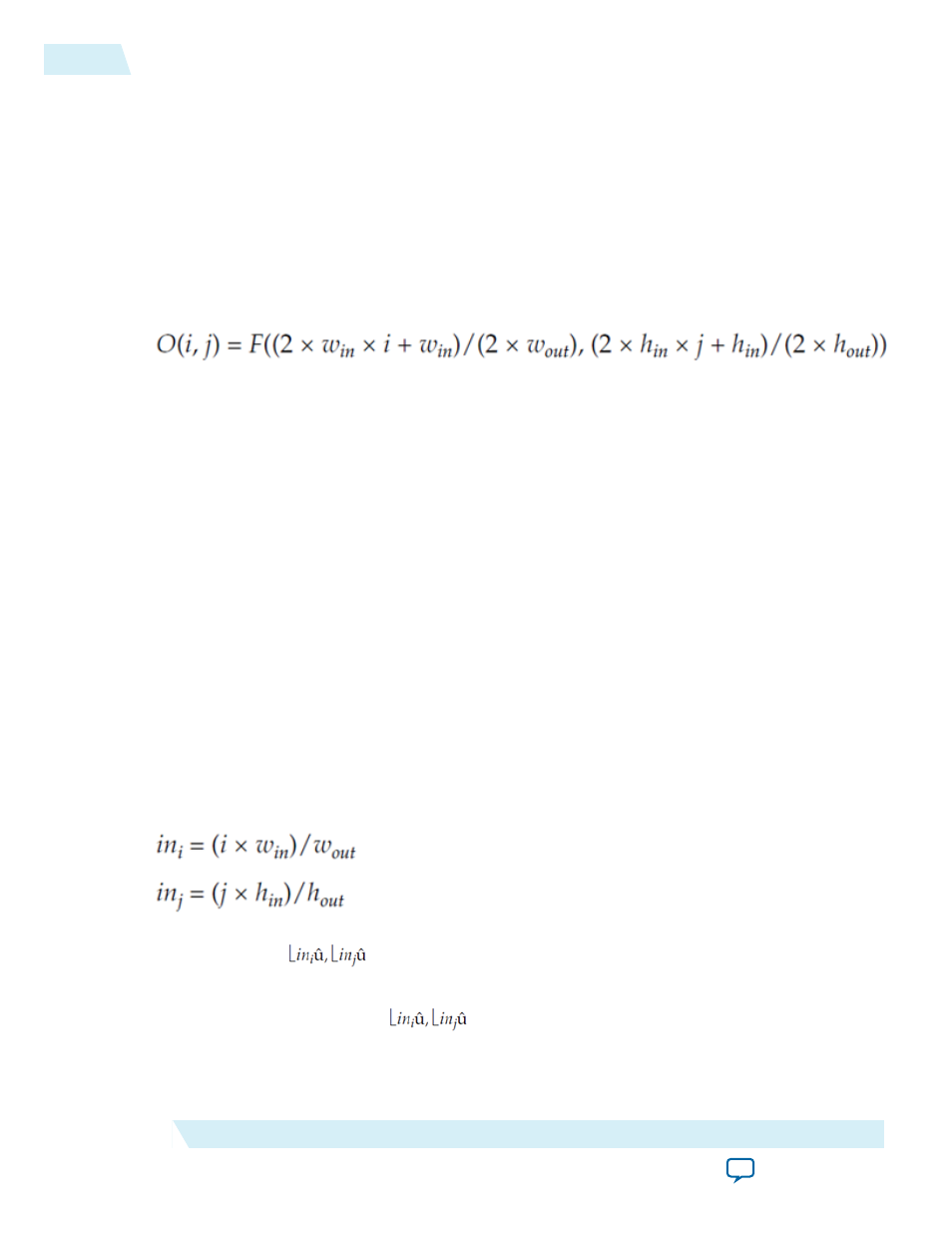Bilinear algorithm, Bilinear algorithmic description, Bilinear algorithm -2 – Altera Video and Image Processing Suite User Manual
Page 223: Bilinear algorithmic description -2

For each output pixel, the nearest-neighbor method picks the value of the nearest input pixel to the
correct input position. Formally, to find a value for an output pixel located at (i, j), the nearest-neighbor
method picks the value of the nearest input pixel to ((i+0.5) w
in
/w
out
, (j+0.5) h
in
/h
out
).
The 0.5 values in this equation come from considering the coordinates of an image array to be on the lines
of a 2D grid, but the pixels to be equally spaced between the grid lines that is, at half values.
This equation gives an answer relative to the mid-point of the input pixel. You must subtract 0.5 to
translate from pixel positions to grid positions. However, this 0.5 would then be added again so that later
truncation performs rounding to the nearest integer. Therefore no change is required.
The calculation performed by the Scaler II is equivalent to the following integer calculation:
Bilinear Algorithm
Bilinear algorithm is of higher quality and more expensive than the nearest-neighbor algorithm.
If you use the bilinear algorithm, the jagged edges of the nearest-neighbor method are smoothed out.
However, this is at the expense of losing some sharpness on edges.
The bilinear algorithm uses four multipliers per channel in parallel. The size of each multiplier is either
the sum of the horizontal and vertical fraction bits plus two, or the input data bit width, whichever is
greater. For example, with four horizontal fraction bits, three vertical fraction bits, and eight-bit input
data, the multipliers are nine-bit.
With the same configuration but 10-bit input data, the multipliers are 10-bit. The function uses two line
buffers. As in nearest-neighbor mode, each of line buffers is the size of a clipped line from the input
image. The logic area is more than the nearest-neighbor method.
Bilinear Algorithmic Description
The algorithmic operations of the bilinear method can be modeled using a frame-based method.
To find a value for an output pixel located at (i, j), we first calculate the corresponding location on the
input:
The integer solutions
to these equations provide the location of the top-left corner of the four
input pixels to be summed.
The differences between in
i
, in
j
, and
are a measure of the error in how far the top-left input
pixel is from the real-valued position that we want to read from. Call these errors err
i
and err
j
. The
17-2
Bilinear Algorithm
UG-VIPSUITE
2015.05.04
Altera Corporation
Scaler II IP Core
